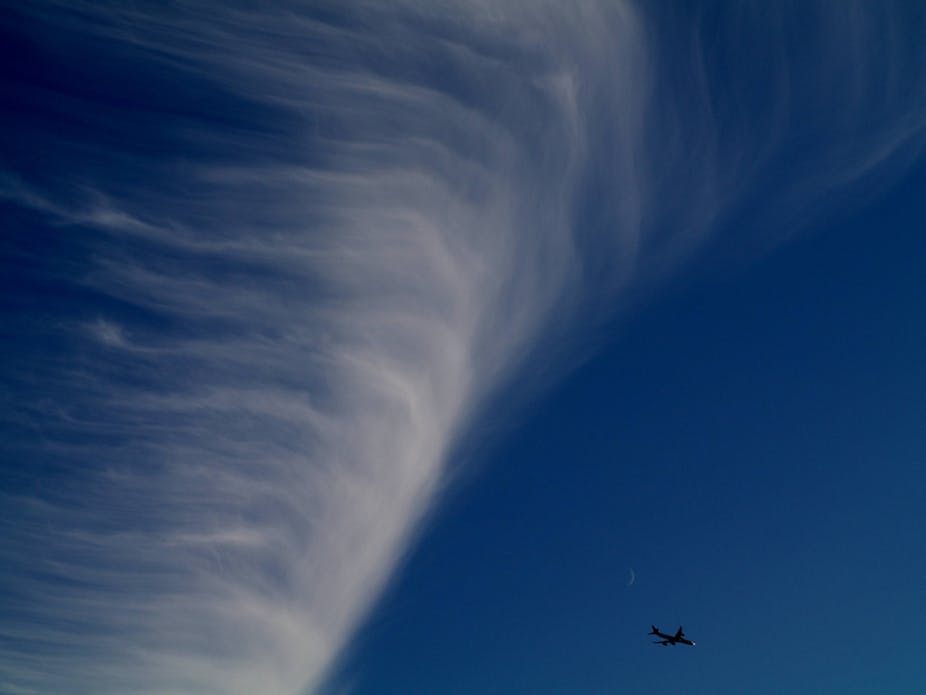Holes created by planes flying through clouds near airports may cause a slight increase in rain or snowfall in the local area, a new study has found.
Scientists who studied the effect have likened it to cloud seeding, where aircraft deposit silver iodide or dry ice particles inside clouds so water vapour can freeze onto them. The particles soon get so heavy they fall to the ground in the form of rain, snow or hail.
Australia has been experimenting with cloud seeding since the 1940s but as clouds are needed for the technology to work, it has no use in breaking droughts in areas with cloudless skies.
China seeded clouds in the lead-up to the Beijing Olympics in an attempt to drain the sky of rain so visitors could enjoy good weather.
In a study led by Andrew Heymsfield from the U.S. National Center for Atmospheric Research, researchers found that aircraft can boost the formation of airborne ice crystals (which can lead to snow) as they drill holes through the clouds. They dubbed the process “inadvertent seeding.”
“The holes have been associated with inadvertent seeding of clouds with ice particles generated by aircraft, produced through spontaneous freezing of cloud droplets in air cooled as it flows around aircraft propeller tips or over jet aircraft wings,” the scientists said in their paper, which was published in the journal Science.
“Inadvertent seeding may not be important globally, but regionally near major airports in midlatitudes during cool weather months it may lead to enhanced precipitation at the ground.”
However, it’s hard to say how much the plane holes influence precipitation rates, said Professor Robert D. Kelly, a cloud seeding expert and atmospheric scientist at the University of Wyoming in the U.S.
“It is difficult to compare the seeded precipitation amounts with what would have fallen without the seeding. Since airports cannot be moved around, this would make the idea extra difficult,” said Professor Kelly, who was not involved in the study.
His colleague in the same department, Jeffrey French, said the Heymsfield study showed that holes in clouds can lead to precipitation.
“Heymsfield and his team document a phenomenon that was thought to be quite rare, and showed it to be rather quite common, at least under certain atmospheric conditions,” he said.
“However, to the general population, the significance is likely a lot less. Yes, any precipitation around airports can and does impact society but in the greater scheme of things, this will not change how we live.”

